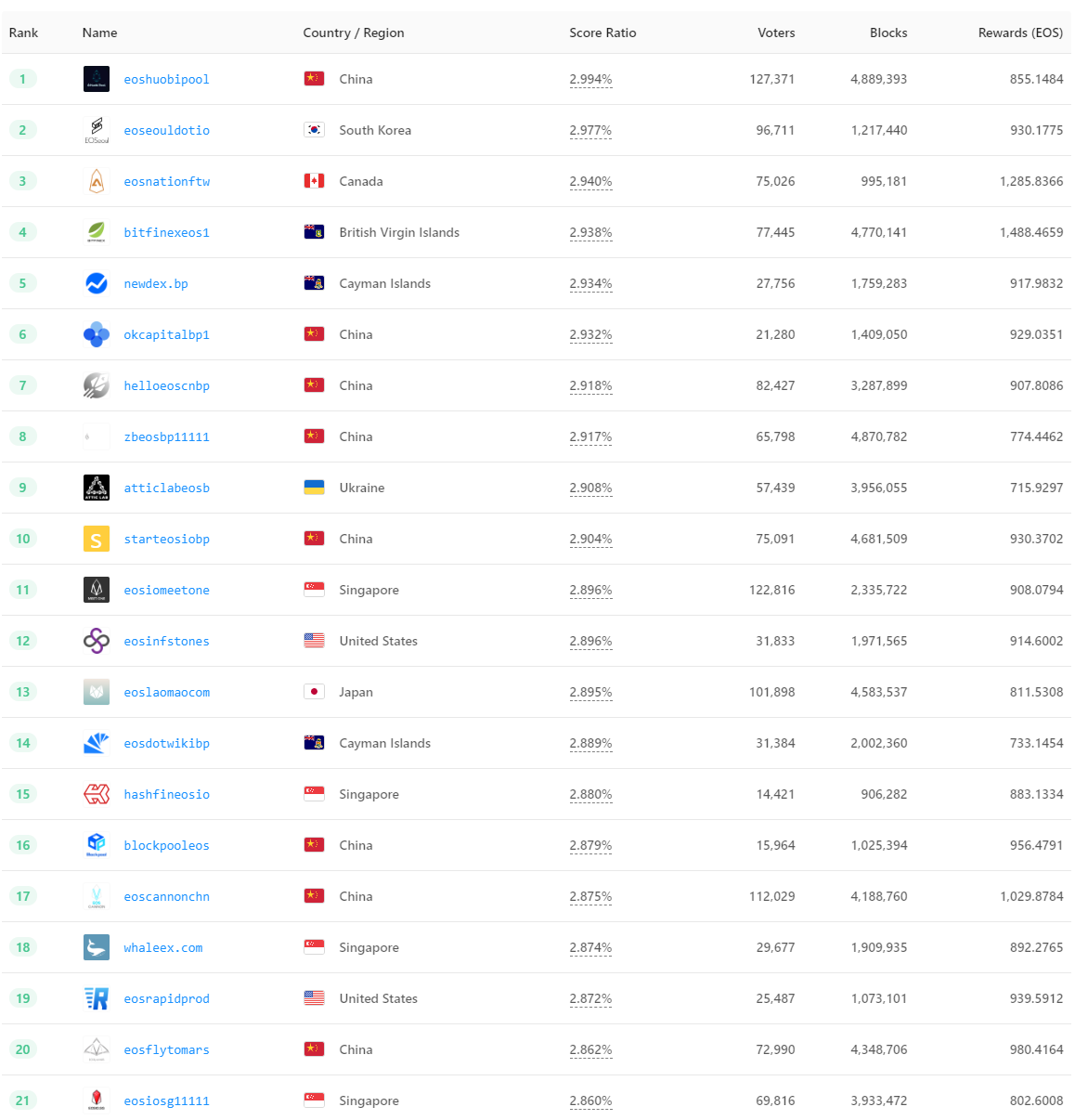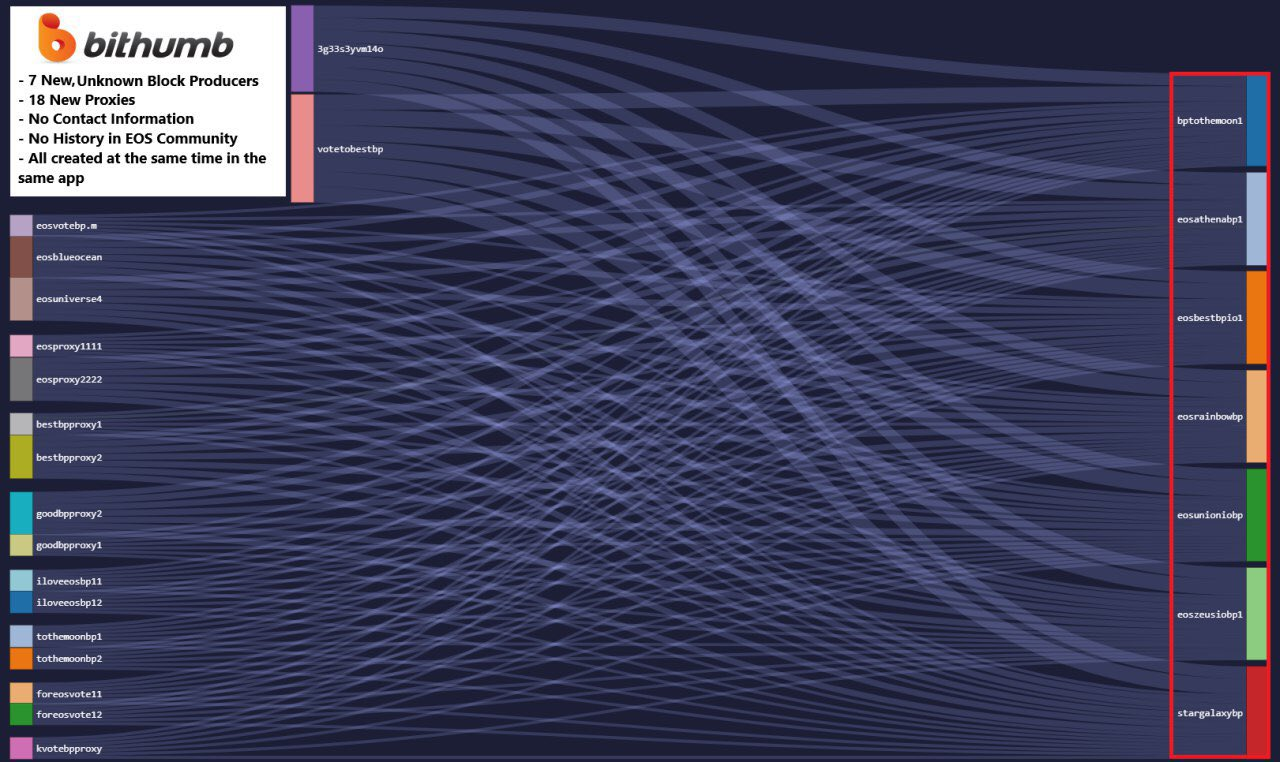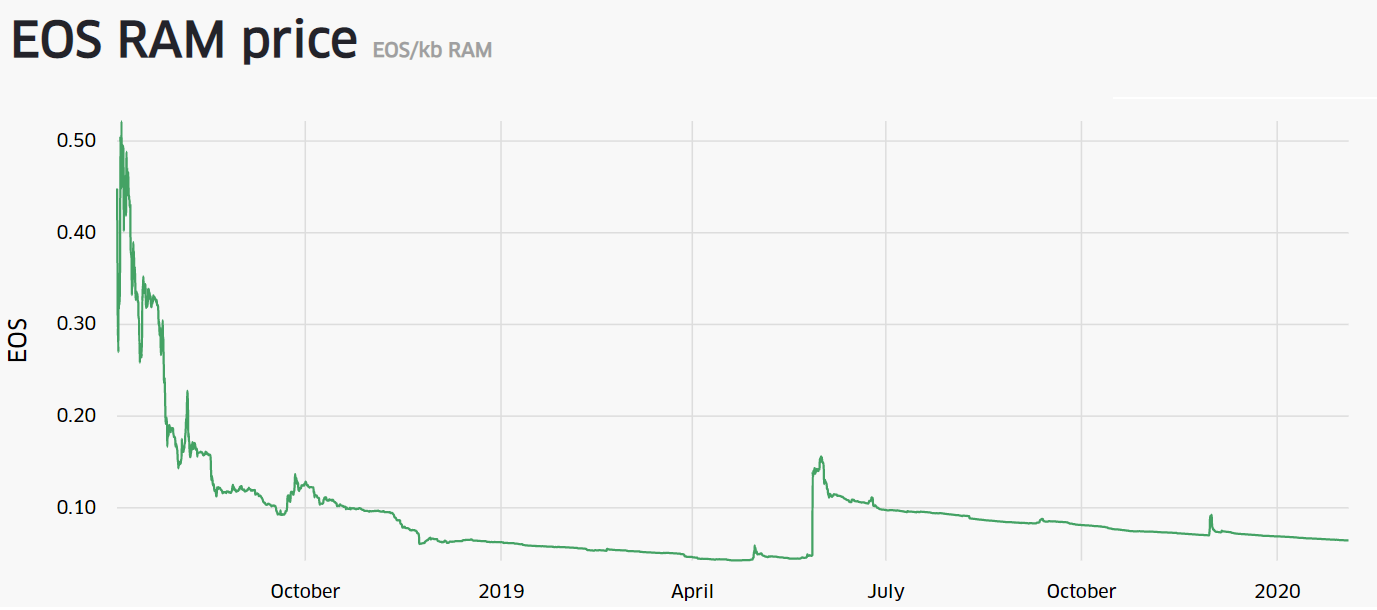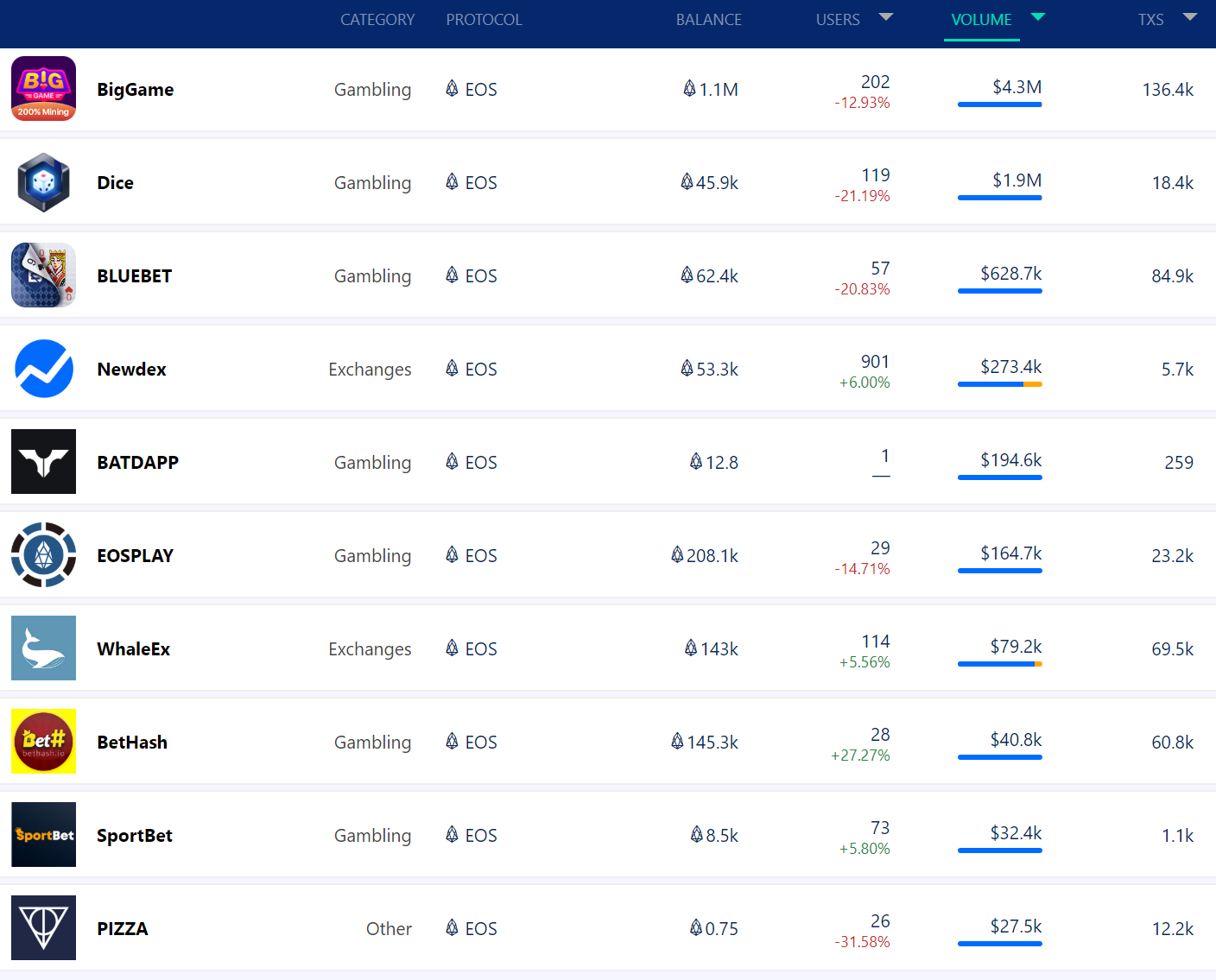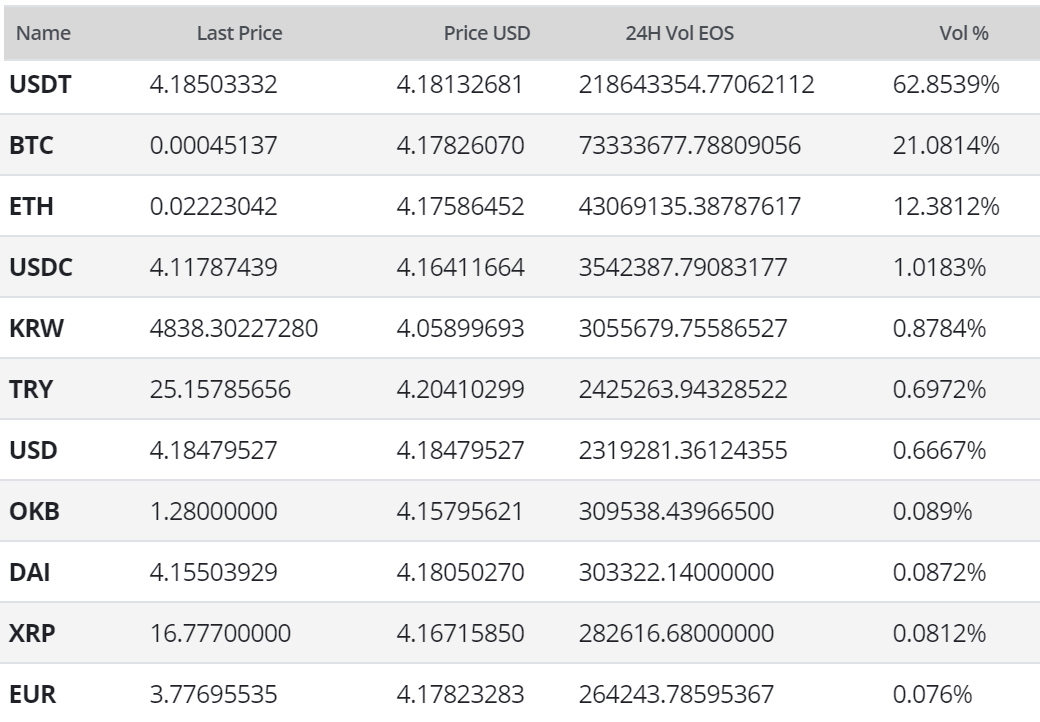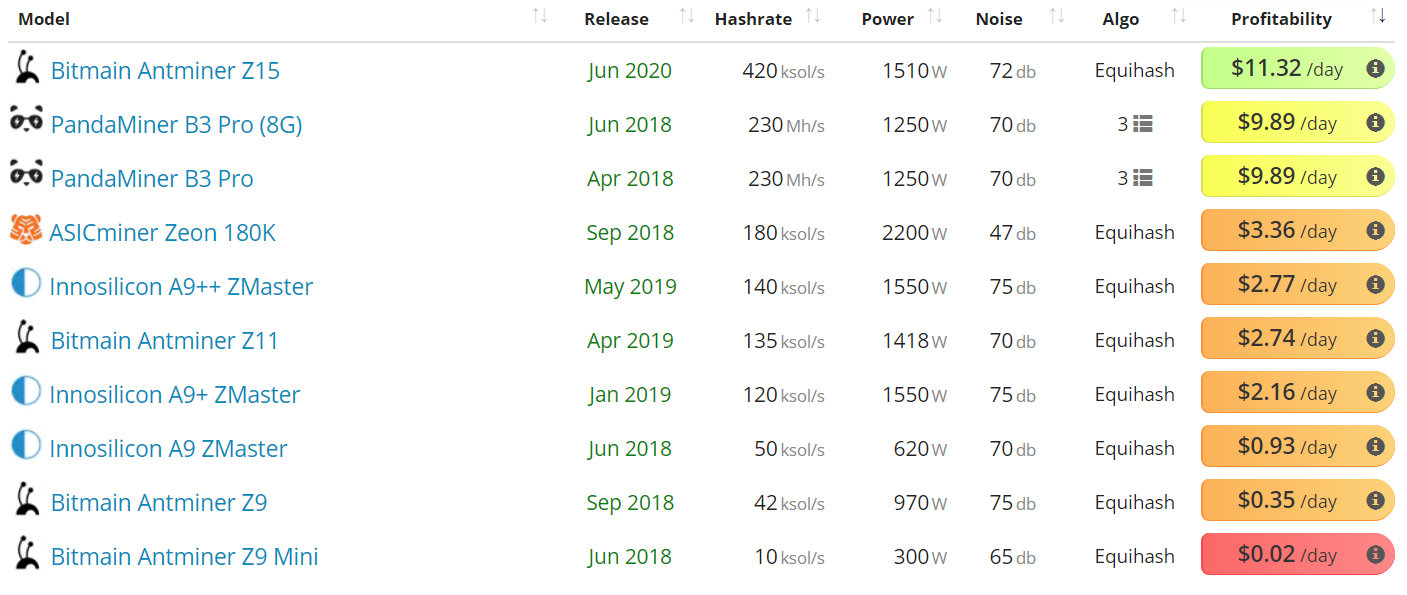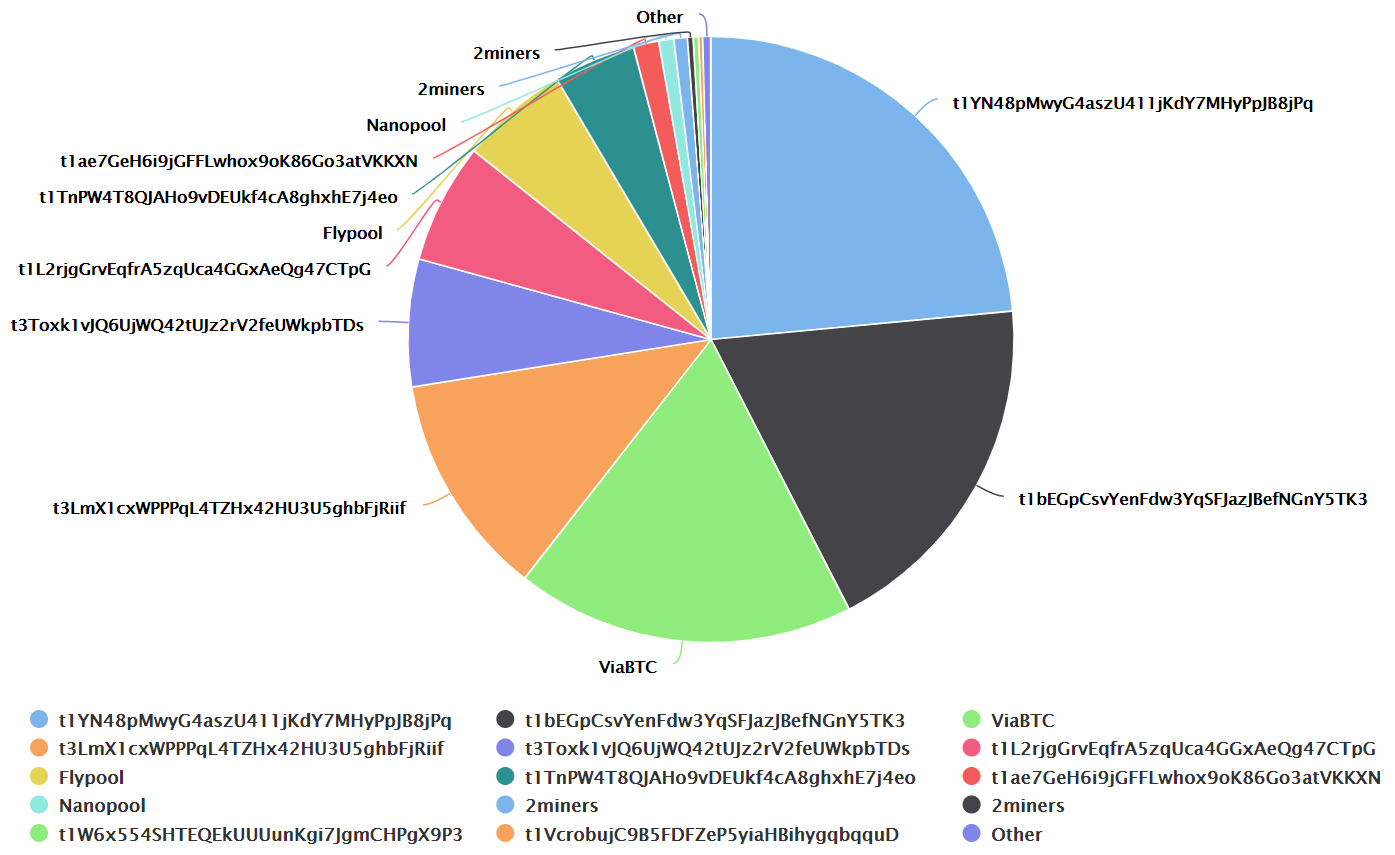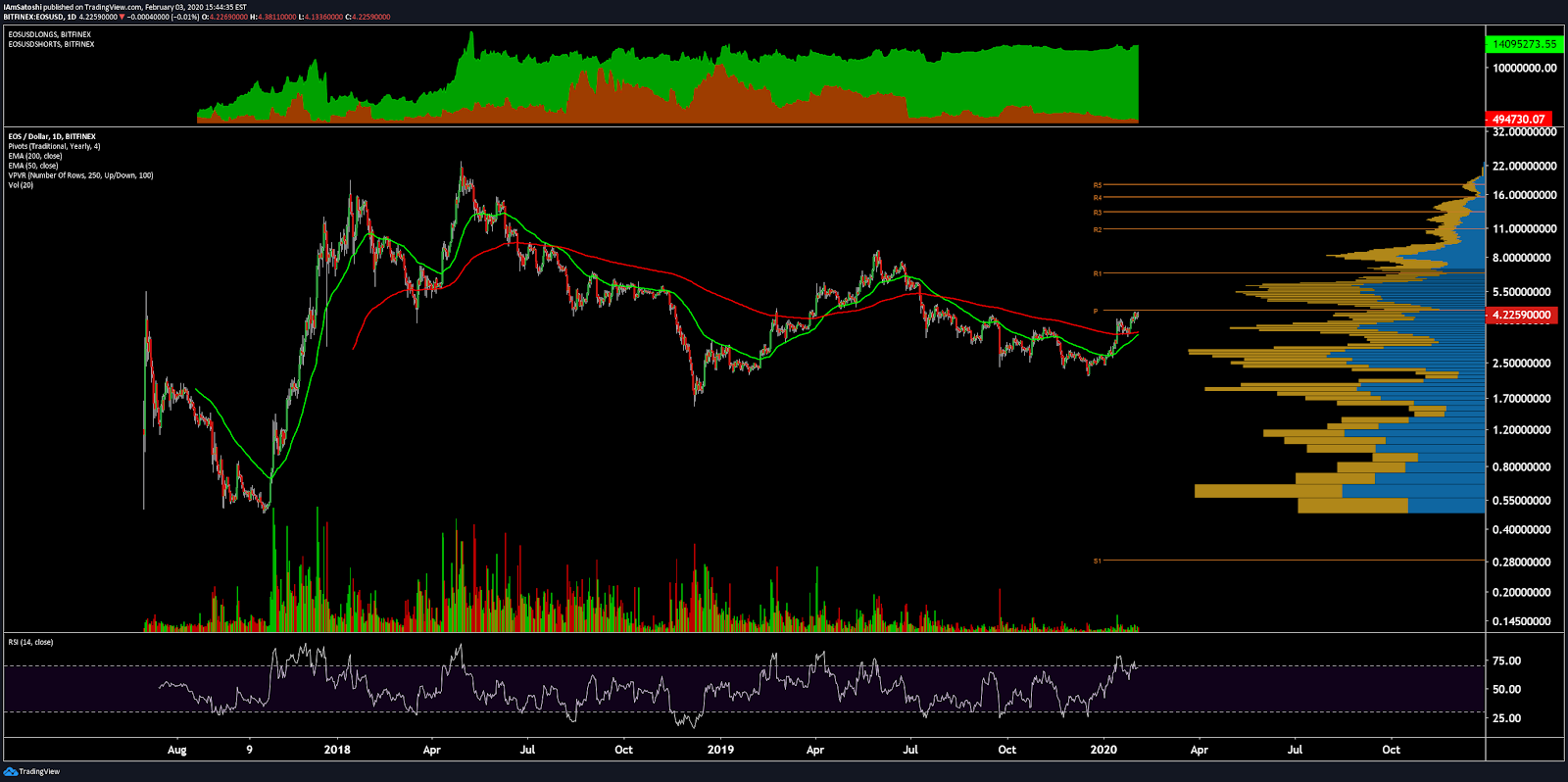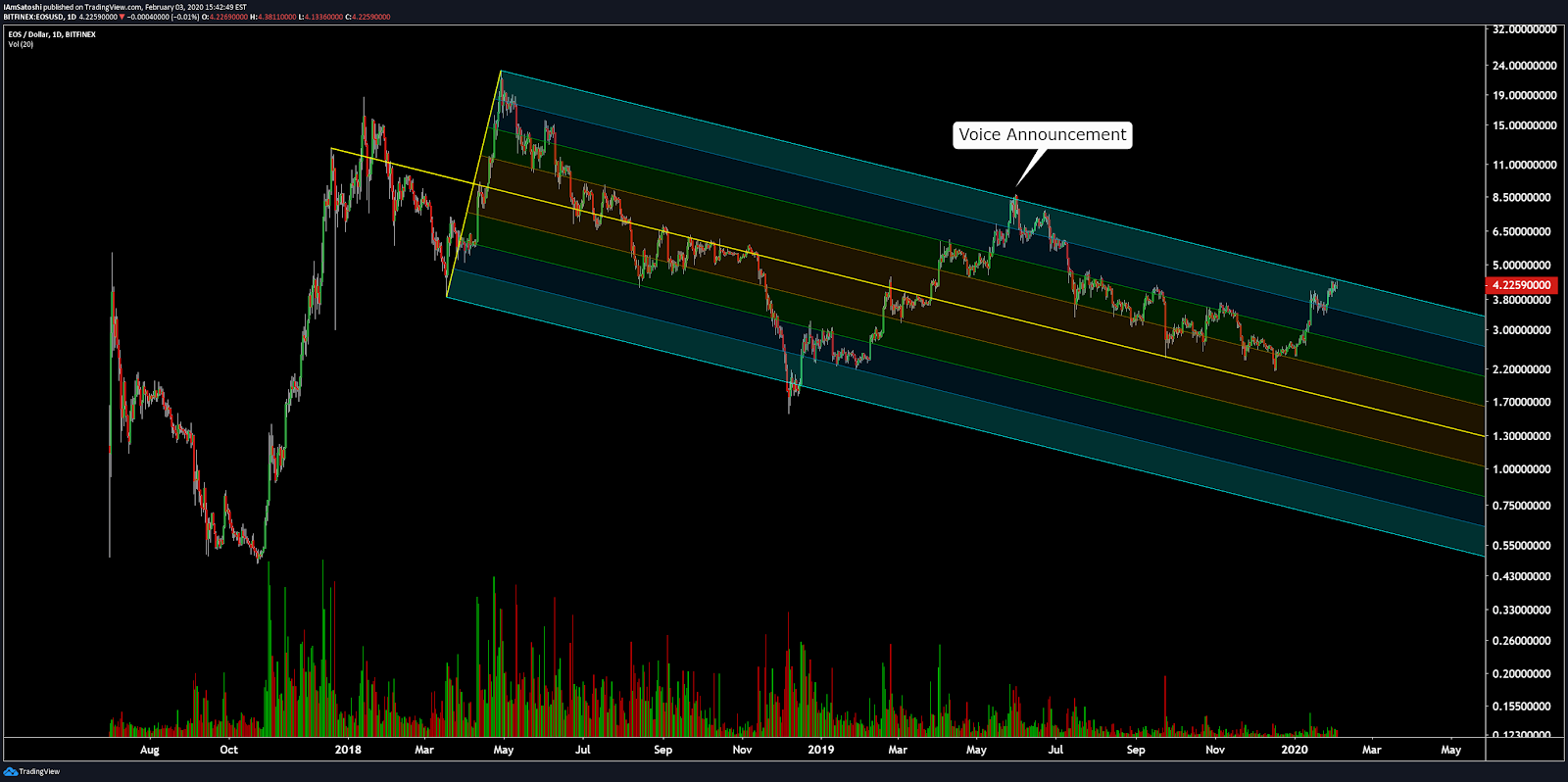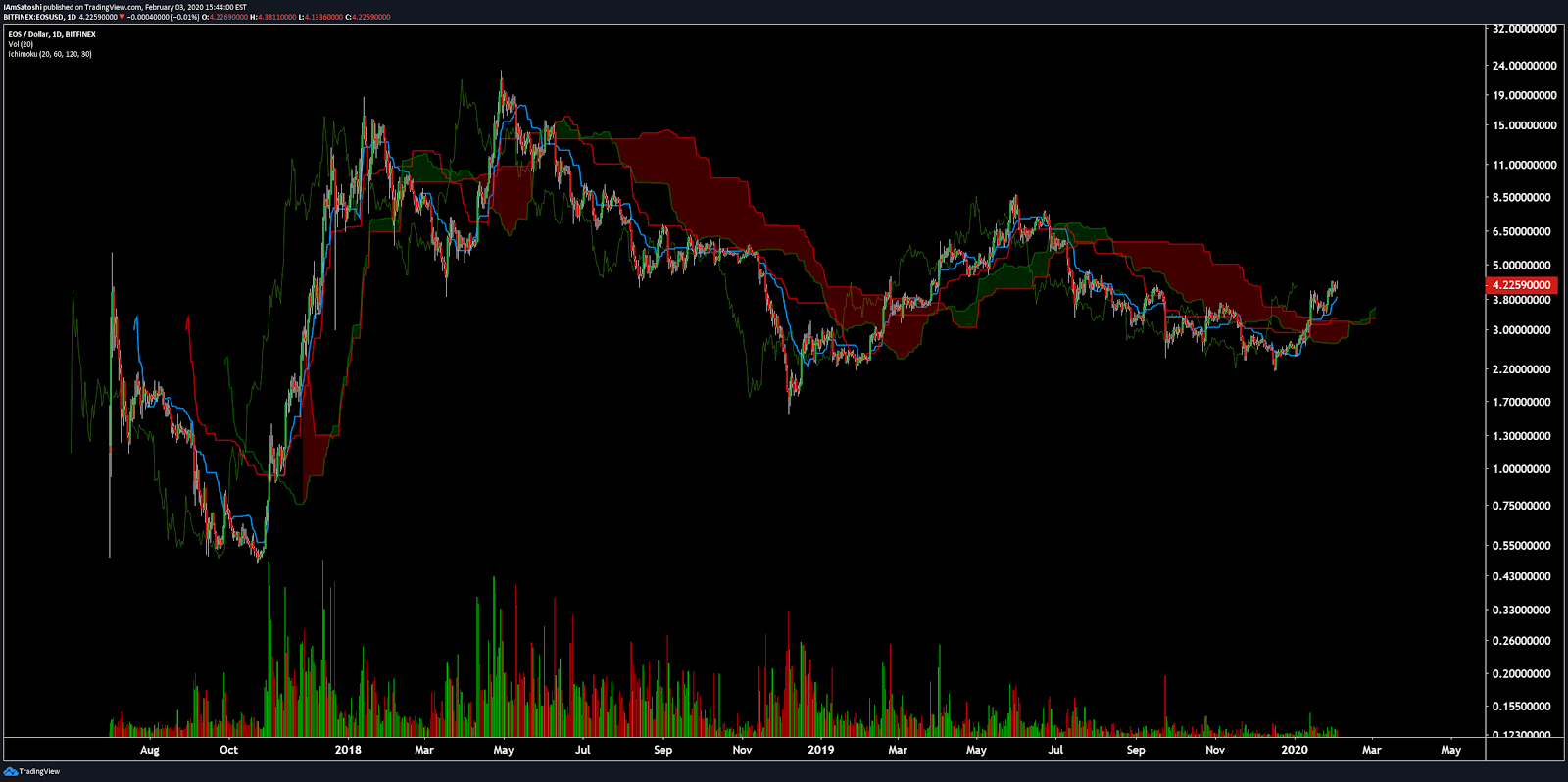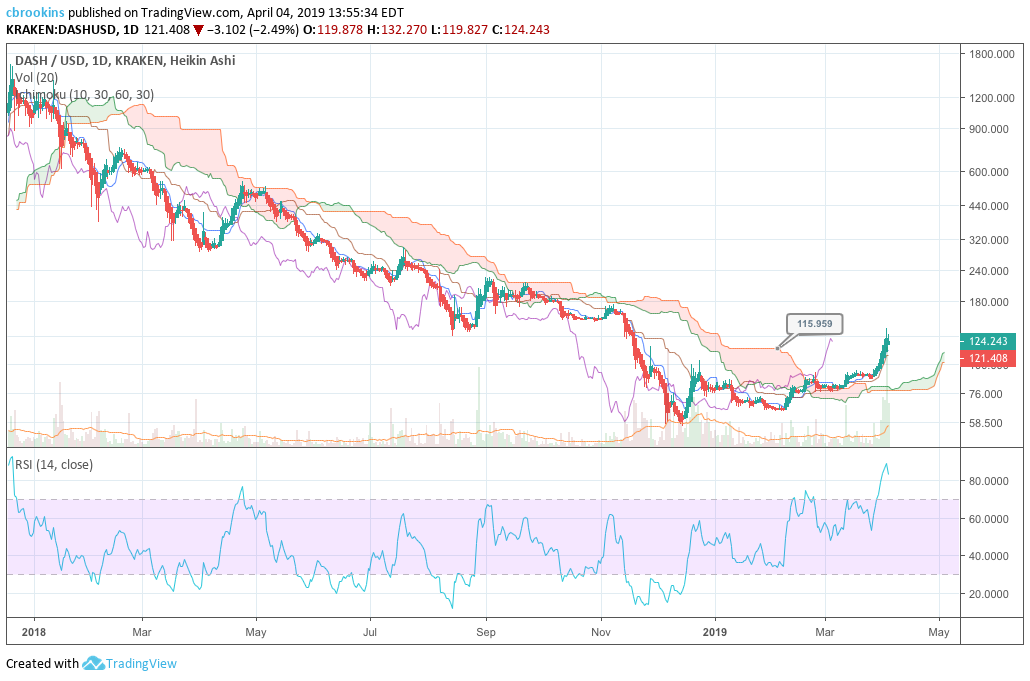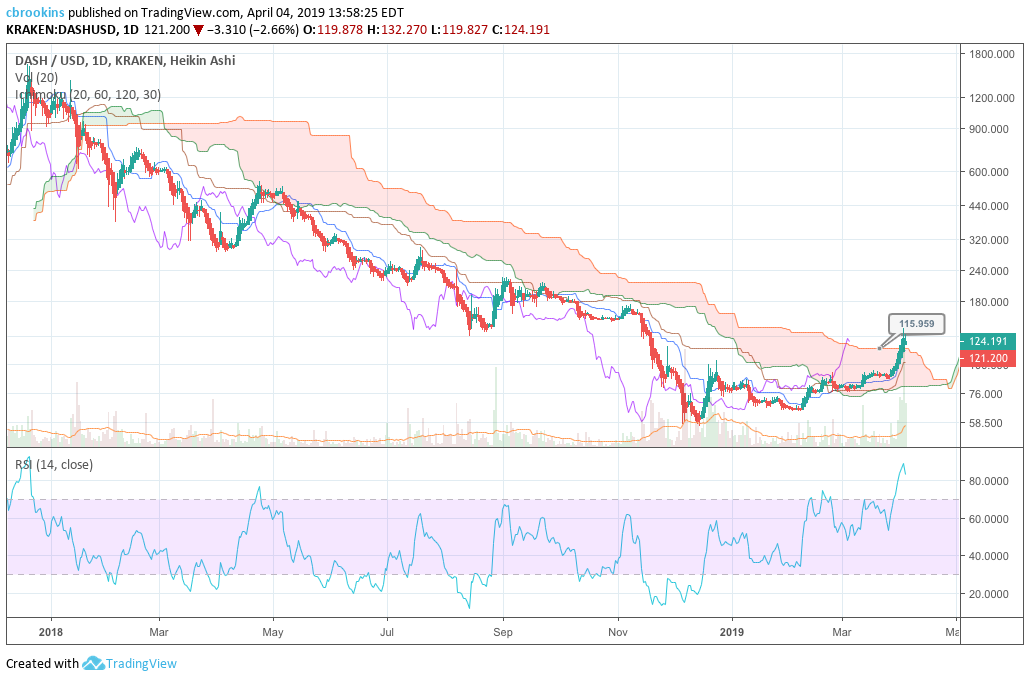Augur Price Analysis- Project matures but user numbers still low
Augur (REP) has been a standout altcoin performer in 2019, rising over 100% since January 1st. Core updates and periphery applications built around the platform have created some market buzz and onchain volume, however, active user activity remain unimpressive and finding liquidity is still a challenge for most users and markets.
Augur (REP) is the leading decentralized prediction platform built on the Ethereum blockchain. It is designed to forecast and communicate the outcome of real world events based on a majority consensus principle.
Traders participate in peer-to-peer prediction markets based on real world events. Augur’s intricate reward and dispute model is designed to create a system where market odds naturally align with true, real world sentiment. Augur utilizes the “wisdom of the crowd” phenomenon, which suggests that the collective predictions of a group of people will be more accurate than predictions made by single experts.
In a podcast interview with crypto influencer Anthony Pompliano, Augur co-founder Jeremy Gardner said that Augur’s vision was to build a “decentralised, global source of truth and forecasting.”
The price of Augur’s native token REP, is down ~2% in the last 7 days and 6% in the last 30, but is up ~150% since the start of the year. The Augur/REP ICO was conducted back in 2015 with 2,500 investors spending ~USD 5.3 million on REP tokens. REP currently occupies the 34th position on the Brave New Coin market cap table.
The price of REP is down ~80% from an all time high achieved in January 2018. The current iteration of the Augur platform launched on the Ethereum mainnet in July 2018.
Augur mechanics
The Augur platform functions with a smart contract which matches opposite orders. Users who want to make opposing bets on the outcome of specific betting markets are connected and interact with each other.
For example, on the currently open Augur market, “Will Donald Trump be Re-Elected in 2020?” there is ~$38,352 worth of open interest. The market closes on December 6th, 2020. It currently leans 57% “Yes”, meaning if a trader wants to buy a 100 ETH stake in Donald Trump being re-elected, they would do so at those odds. They would also require a counterparty willing to match the stake at 43% odds that “No” Donald Trump will not be re-elected in order to be filled.
If a user buys an outcome that ends up being true (based on oracle reporting) in their favour, they will profit based on their stake. If the selected outcome ends up being false then the user loses their stake.
As all markets are open before the oracle finally reports on an outcome, users can cash out their stakes; hedging risk, minimizing losses and more quickly accessing profits if they are no longer interested in participating in the market.
Markets can either be binary (Yes/No or one/or the other markets), categorical (multiple different fixed outcomes), or scalar (variable, with opportunities to go short or long).
Source: curiousgiraffe.io
The above word cloud indicates the most frequent tags on Augur markets by size differences. Markets related to the terms ‘cryptocurrency’ and ‘ethereum price’ remain ever present on the platform because of the demographics of crypto dapp users. Terms related to football/soccer are also popular with the terms ‘soccer’, ‘league’, ‘champions’ and ‘Europa’ all prominent.
Interestingly, while the NBA playoffs are currently dominating the coverage of sports on American media and social channels, basketball related terms appear underrepresented on the word cloud. This may suggest that Augur has more European than American users, or that Soccer events are more straightforward to speculate on than basketball ones.
source:Crystalball.be
The Augur markets with events that speculate on digital asset prices on specific dates have tended to garner the most open interest on Augur. Some markets around US politics and sports can sometimes become popular.
StateoftheDapps.com tracks the primary Augur smart contracts collectively as an Ethereum Dapp. It indicates a slight downward trend in both the number of active users and transactions over the course of the last month with spikes occurring in the middle of the month for both.
On-chain volume numbers on Augur are high compared to a number of other Ethereum Dapps. This suggests that even though they are fewer than 200 users, each represents a significant amount of ETH. Based on ETH prices on the 7th of May, average daily Ethereum volume on Augur was ~$60,700.
Augur is currently listed as the 25 most popular Dapp in the ecosystem and has averaged ~118 active users a day over the last month and ~424 transactions.
The majority of unique addresses on Augur are held by trading addresses and as such the most commonly used digital asset used on Augur is ETH, not the native token REP.
Source: Crystalball.be.
‘Yes/No’ markets have always historically been the most popular type of market on Augur, likely because of how easy they are to create and participate in. Recently, there appears to have been a slight proportional increase in the number of scalar markets which may suggest the Augur community is experimenting with more unusual market designs.
While all trading (order creation and filling) on Augur is currently done with ETH, the network’s native REP token represents ‘reputation’. Users/oracles are rewarded REP if they report an event and it matches up to the agreed consensus of other reporters. They must ‘work’ (report events, participate in dispute resolution) to keep their REP stakes, and inactive REP accounts are punished.
This is an incentive based system, if an oracle misreports an event—an objective output—then the rest of the market makes a note (seamlessly through a smart contract) of this bad reporter and they are punished by losing REP.
Potential and supporting infrastructure
Travis Kling, Chief Investment Officer of Ikigai Capital said, “Owning Ethereum today is a call option on what you think the network is going to be in the future.” Similarly, while most REP buyers are likely looking to generate short term profits through trading, some are buying and holding REP with the expectation of future use cases as the platform grows and matures.
Augur app user numbers are not impressive at this early stage but the functioning platform infrastructure is complex and impressive. It is being experimented with on the Ethereum mainnet, and is winning over fans from the crypto analyst and investment communities.
"When product usage is growing despite a mediocre UX, it is typically a good idea to start paying attention if you’re an entrepreneur or investor," says 1confirmation founder Nick Tomaino. "It is still quite early, but feels like Augur is on to something."
It is easy to understand the excitement and potential surrounding Augur. It has a unique, varied value proposition and a high ceiling on future value because;
- There is freedom for users to create any market they want, and let other users determine if it is a feasible betting opportunity.
- Blockchain based smart contract settlement has the potential to substantially reduce the cost and time to settle multiple bets across numerous marketplaces.
- The permissionless nature of Augur (funds and transactions are secured and confirmed based on the Ethereum global account) lets users in any region participate in previously unavailable secure marketplaces. I.e. An ETH holder in Asia can make speculative bets on US stocks cheaply, with minimized friction, in a way not possible before marketplaces like Augur existed.
Augur also has a significant potential to support an ecosystem of apps that leverage the core prediction market infrastructure, to build decentralized forecasting based tools and games.
Predictions.global, is an example of an Augur app, and it comes billed with the tagline “See What the World Thinks.” It is a dashboard that sorts the various Augur markets into different categories and provides excellent granular information on each market. Using Predictions.global it is easy to see what the Augur community thinks about global events like the closing price of Uber stock on the day it IPOs, whether Liverpool will win the 2019 Premier League, or what the price of ETH will be at the end of May, and potentially make personal decisions based on this tangible ‘wisdom of the crowd’ data.
Another idiosyncratic app leveraging Augur’s base prediction market is PdotIndex, which lets users invest in people (celebrities) the same way they might with companies. A Pdot index value for a public figure like Lebron consists of multiple individual Augur operated speculative markets (How many points per game will he average, how many games will his team win this season etc) that combine to give a weighted score for each listed public figure.
The individual’s score changes based on the differing odds given to the outcomes of events related to the public figure, based on assessments by the Augur betting crowd. Traders can bet ETH to make profits around public sentiment changes.
Pdot currently only runs on the Rinkeby testnet and is still in the early stages of development, but the platform gives a sense of what could be built within the Augur ecosystem in the future.
A number of other Augur apps also exist that make the base prediction market easier to interact with (such as user experience tools), and also present Augur’s “wisdom of the crowd” data in alternative forms. These include:
- crystalball.be collects a number of relevant Augur performance metrics, and charts live data trends
- Veil is an Augur derivative market that makes trade execution more straightforward. It was built using 0x
- The Augur Insider calculates volatility for Augur markets
- Augur dispute crowdsourcer lets users check the outcome states of different markets
There has already been some excitement and positive market reaction to a number of these applications. The release of Veil coincided with a period of extremely strong price performance of REP tokens.
Around the lead up to the release of Veil on January 15th, the price of REP pumped strongly, rising ~127% between January 14th and January 20th and from ~USD8.27 to ~USD18.80. Since this mid-January lift off, price has ranged and stabilized. It currently sits at close to ~USD 21.
As the Augur ecosystem matures, the release of periphery apps that improve UX and attract new users, may act as key short term speculative price drivers.
Roadblocks to progress
A major obstacle in Augur accessing new users is the platform’s poor user experience. It’s a challenge for non-technical traders to understand buy and sell outcomes or calculate profits. Additionally, dispute resolution and market settlement within Augur can take an extended period of time, which affects how long it takes to receive payouts.
Veil, for example, has features like instant settlement (enabled by third party auditing of markets) that pays out users as soon as the market expires, and a leaderboard showing user performance across the platform to create an objective way for users to assess their ability to predict real world events.
Its value proposition is to make the Augur trading experience more straightforward and appealing to mainstream consumers. It appears to have connected with some traders and driven some speculative momentum around the product release dates.
Unfortunately, since release, actual usage of Veil as an Augur derivative solution has been minimal. There are currently just 13 active markets on Veil. Based on displayed trade volume most of these markets appear inactive with few orders filled.
A clear issue with Augur in its current form is liquidity. Of the 327 live markets on Augur, only 37 meet the minimum liquidity threshold set by aggregator predictions.global. This means that only 10% of Augur markets are worth trading, or will be able to satisfy counter matching requirements.
The platform’s counter matching model has lead to difficulties in growing the Augur user base because of the nature of two-sided marketplaces and the chicken-and-egg problem.
With Augur the number of order creators drives the number of order fillers (market makers/counter parties) and without fillers available, traders are not willing to create orders, and without creators creating trading opportunities fillers opt out. This means that Augur’s two sided marketplace solution has faced challenges achieving scale in its early form. Augur’s mission of becoming a ‘decentralized, global source of truth and forecasting’ is limited by the current lack of a global forecasting community.
Another challenge to Augur’s growth has been a previously gameable and compromised market payout model.
In Augur’s current build, a market will resolve as “Invalid” when reporters deem its outcome ambiguous or unverifiable. Shares in such markets can be turned in for an equal amount of money. For example, a three outcome market with outcomes A, B, and C that resolves as Invalid will give .33 ETH for a share of each outcome.
Some users/market creators like @realPoyoPoyo are clear about their attempts to game the Augur system. By creating a market with a deliberately subtle mistake (tricking participants), and betting on the outcomes that will not win, they stake REP on the market being invalid at cheap prices. The gamers know the staked funds will be distributed equally, so gamers that bet on the wrong outcome will profit.
This excellent thread details how challenging it can be to write precise markets on Augur with clear outcomes. A recent example of a market with a vague outcome is “will GRIN/USD be listed on CoinMarketCap by March 16, 2019?” built on Veil. The market was unclear because GRIN/USD can mean either GRIN denominated in USD (Veil’s intent) or the literal GRIN/USD trading pair. Veil halted trading on the market and later resolved it as YES. It was clear that the subtle ambiguity built into this question, led to flawed decision making from traders.
Augur V2
The code for the platform’s next major update, Augur V2, was released in early April. The update partially addresses some of the issues around the creation of ambiguous markets on the platform. The update will allow “Invalid” to be a tradeable outcome like any other, enabling traders to hedge the risk of Invalid outcomes and gauge the likelihood that one may occur. For example, a trader viewing a market with a lot of money staked on invalid may choose not to participate in the market.
Another significant step built into the V2 update is DAI Denominated markets. Augur V1, only allowed traders to use ETH for trading activity. ETH was a natural choice for a token, given that Augur is an Ethereum based platform. However, ETH is a highly volatile asset prone to frequent price changes, affecting Augur trader’s willingness to participate in markets.
DAI is stablecoin that aims to hold a 1-to-1 peg to the USD. After enabling DAI denominations and payments, the Augur markets will be less volatile and more accessible. In the official V2 documentation, Augur refers specifically to multi-collateral DAI capabilities. This version of DAI has not yet been released, which hints that Augur V2 may only be released post the launch of multi-collateral DAI.
Augur V2 will also change some of the core utility built into the REP token. Post V2 launch, if a market in Augur V2 forks (remains disputed or unresolved after several rounds of dispute resolution), the user has 60 days to participate (make a decision on the outcome of a forked market) or they will lose their REP.
This protocol means that Augur should become more difficult to fork because more users and more REP will be incentivized to participate in fork consensus. This means more barriers for a bad actor to try to cross to be on the right outcome side of an Augur wide fork.
This protocol was controversial for many because many present day REP holders are investors or traders who accumulated the token for speculative purposes. They do not actively participate within the Augur marketplace or keep track of markets which are unresolved or close to forking. Two months of onchain inactivity would lead to the loss of all held REP tokens.
Making the correct decision on an Augur fork may also require monitoring community discussion on platforms like Reddit or Twitter to determine who bad actors may be, a process many current REP holders are uninterested in.
Adjusting fees paid to reporters (in REP) by traders is one of the main mechanisms that keeps Augur secure. The fee is adjusted based on the total open interest (OI) on the platform and the price of REP. In V1, Augur used a centralized price oracle to report the market price of REP so a fee could be calculated. This oracle price feed was often buggy and for a while did not adjust fees paid to reporters.
V2 fixes the bug and will introduce a built-in double auction that will act as the price feed. Two double auctions will take place each week where a pot of DAI and REP are sold for one another, and a REP price is calculated from the sale prices. The platform will mint a small amount of REP weekly to compensate for any losses from the auction. This introduces a small amount of inflation to REP in exchange for a decentralized price feed used to maintain platform security.
Augur, in contrast to other blockchain projects, may be choosing to increase the friction involved with holding native tokens, with the goal of building a more robust platform. The minting of REP to support the price feed auction means individual tokens may lose real value and purchasing power over time with inflation, possibly disincentivizing long term value investors. However, the minting will help improve and develop a new price feed model.
The “no fork participation-lose all your tokens” protocol may mean REP becomes a risky investment for some. 60 days of not observing what is happening on-chain and within Augur markets may mean a user loses all held REP, but it creates a more robust “if Augur forks protocol” and may incentivize more users to semi-actively participate in the Augur ecosystem.
It is unclear when Augur V2 will be released but development appears to be moving along well and the code for the update is currently being externally audited.
Santiment recently tracked and listed the most active ERC20 token projects by development in April and listed Augur (REP) third behind Storj (STORJ) and Status (SNT). Development activity on Augur in the last month has revolved around a major UI update, that will seek to significantly improve the trading interface of Augur and the backend and smart contract solutions required for V2.
Network activity
Derived from the NVT ratio, the NVT signal is a responsive blockchain valuation metric developed by Willy Woo and Dmitriy Kalichkin. Crypto markets are prone to bubbles of speculative purchasing, not backed up by underlying network performance and activity.
The NVT signal provides some insight into at what stage of this price cycle a token may be at.
A high NVT signal is indicative of a network that is going through one of these bubble periods, and may move towards a position of becoming overbought/overvalued, because of the market’s speculative assessments running out of momentum.
The NVT signal of REP has tested lower highs/overbought inflection points over the last year. This is a bullish long-medium term flag that suggests that onchain volume of REP is steadily growing against token value. NVTS settling around a tighter range suggests a digital asset that is maturing and gathering a steady base on on-chain volume providers.
This pattern suggests that price discovery of the REP asset may be improving, and the “steady growth despite mediocre UX” bullish long term narrative suggested by Nick Tomaino, may be valid.
Since late February, price has risen steadily and has been matched by a steadily falling NVTS line, a strong bullish flag. This pattern means that onchain volume is rising more quickly than prices, and suggests factors pushing price forward are also creating more demand for REP transactions.
Buzz surrounding Augur V2, which is not usable, may be creating demand to interact. REP is also borrowable on decentralized finance app Compound and is the platform’s third most borrowed asset and most borrowed ERC-20 token. The amount of REP borrowed through Compound is currently worth ~100,000 USD.
Source: Loanscan.io
PMR signal
Metcalfe’s law is a measure of connections in a network, as established by Robert Metcalfe, the founder of Ethernet. It has subsequently been used to analyze the true value of network-based financial products like Facebook and Bitcoin. By comparing it to price, it can provide a useful tool to assess whether a token is over or undervalued.
It is also a more straightforward metric to assess when compared to on-chain transaction volume, which can be challenging to measure accurately in USD terms. Addresses are measured as the number of unique sending and receiving addresses participating in transactions daily.
The PMR value of the REP has historically been high, ranging between 6-8 natural log points since the launch of the token. This means that token value/market cap far exceeds the number of active REP addresses.
This suggests any potential network effects within the REP ecosystem, caused by positive externalities like improved liquidity when organic user growth creates more counterparties for trading, are minimal.
As such it appears as though the relationship between price and PMR is not a useful indicator and is purely driven by token value and not active addresses.
The Augur platform will have to address the liquidity challenges and chicken-and-egg problem it currently faces. This should increase the demand for oracle services to a point where a network effect is created and active address growth begins to have a tangible effect on REP prices.
Exchanges and trading pairs
The most popular trading option for REP is BTC with the pair handling close to 72% of daily trading volumes. The second most popular market is the REP/ETH pair. Together the top two pairs make up over 90% of daily trading volume. Fiat transactions with REP are also available in US Dollar, Euro and Korean Won fiat options. The USD value of daily volume of the entire REP trading market is just ~USD 10.5 Million.
Markets on the LAToken exchange dominate the REP trading ecosystem, handling the top two pairs in the ecosystem. REP is also tradeable on large, trusted exchanges such as Coinbase Pro, Binance and Poloniex.
Technical analysis
Moving Averages and Price Momentum
On the 1D chart, REP has followed a negative linear price trend with a Pearson’s R correlation between time and price of ~0.75 (not shown), which has allowed a death cross to persist until April 5, 2019. Currently, price’s golden cross is holding near $20.13, and potentially forming another breakout triangle.
Additionally, on the 1D chart, price has closely followed Fibonacci retracement levels and currently sitting at the 1.618 Fibonacci level. If that level holds, price is likely to retest prior resistance of $23 before testing the 2.618 Fibonacci level of $28.91.
Lastly, on the 1D chart, the volume flow indicator (VFI) is still strongly above 0 with a positive trend still intact, despite the recent price weakness. This buying strength coupled with solid support levels of 1.618 Fibonacci level ($19.99) and 50 day EMA ($18.74) bode well for price appreciation.
Ichimoku Clouds with Relative Strength Indicator (RSI)
The Ichimoku Cloud uses four metrics to determine if a trend exists; the current price in relation to the Cloud, the color of the Cloud (red for bearish, green for bullish), the Tenkan (T) and Kijun (K) cross, Lagging Span (Chikou), and Senkou Span (A & B).
The status of the current Cloud metrics on the 1D frame with singled settings (10/30/60/30) for quicker signals are mixed: price is above the Cloud, Cloud is bullish, the TK cross is bearish, and the Lagging Span is touching price and above the Cloud.
A traditional long entry would occur with a price break above the Cloud, known as a Kumo breakout, with price holding above the Cloud. From there, the trader would use either the Tenkan, Kijun, or Senkou A as their trailing stop.
Price originally completed a Kumo breakout in mid-January 2019. Since then, price has remained strong, despite periodic retests of Cloud support (arrow). Currently, price is retesting Cloud support of $19.99.
However, there are a combination of potentially positive factors for REP:
- Cloud support coincides with Fibonacci support
- VFI is still in the bulls’ favor
- RSI is currently at a decent level of 49.
If history repeats itself and the breakout holds, price is expected to retest prior resistance of $23, with possible future targets of $25.47 and $28. If the breakout does not hold, support levels are $19, 15.50, and 14.23.
The status of the current Cloud metrics on the 1D time frame with doubled settings (20/60/120/30) for more accurate signals is bullish: price is above the Cloud, Cloud is bullish, the TK cross is bullish, and the Lagging Span above the Cloud and touching price.
The slower settings yield similar results with price currently sitting at Cloud support, with similar price targets and support levels.
Conclusion
Despite a full mainnet product released nearly a year ago, Augur is still an immature platform with fewer than 500 users a day and a number of yet to be addressed UX challenges. A lack of users and liquidity on Augur has affected the core utility of the REP token, reducing the importance and demand for its oracle service.
However, core and periphery infrastructure growth has been impressive. A number of applications built on top of Augur and released in the last year have significantly improved the platform’s usability. The soon to be released Augur V2 may help satisfy a number of the core criticisms of the platform and help Augur connect with a new user base.
The recent technical indicators for REP favor the bulls, but the bears should not be counted out until key support levels hold, i.e. 1.618 Fibonacci, Cloud support, and 50 day EMA. On the 1D chart, both the fast-setting trader (10/30/60/30) and slow-setting trader (20/60/120/30) will await price to maintain its current Kumo breakout above $19-20 before entering a long position. Success will yield price targets of $25.47 and $28. Failure will highlight support levels of $19, 15.50, and 14.23.

Don’t miss out – Find out more today


